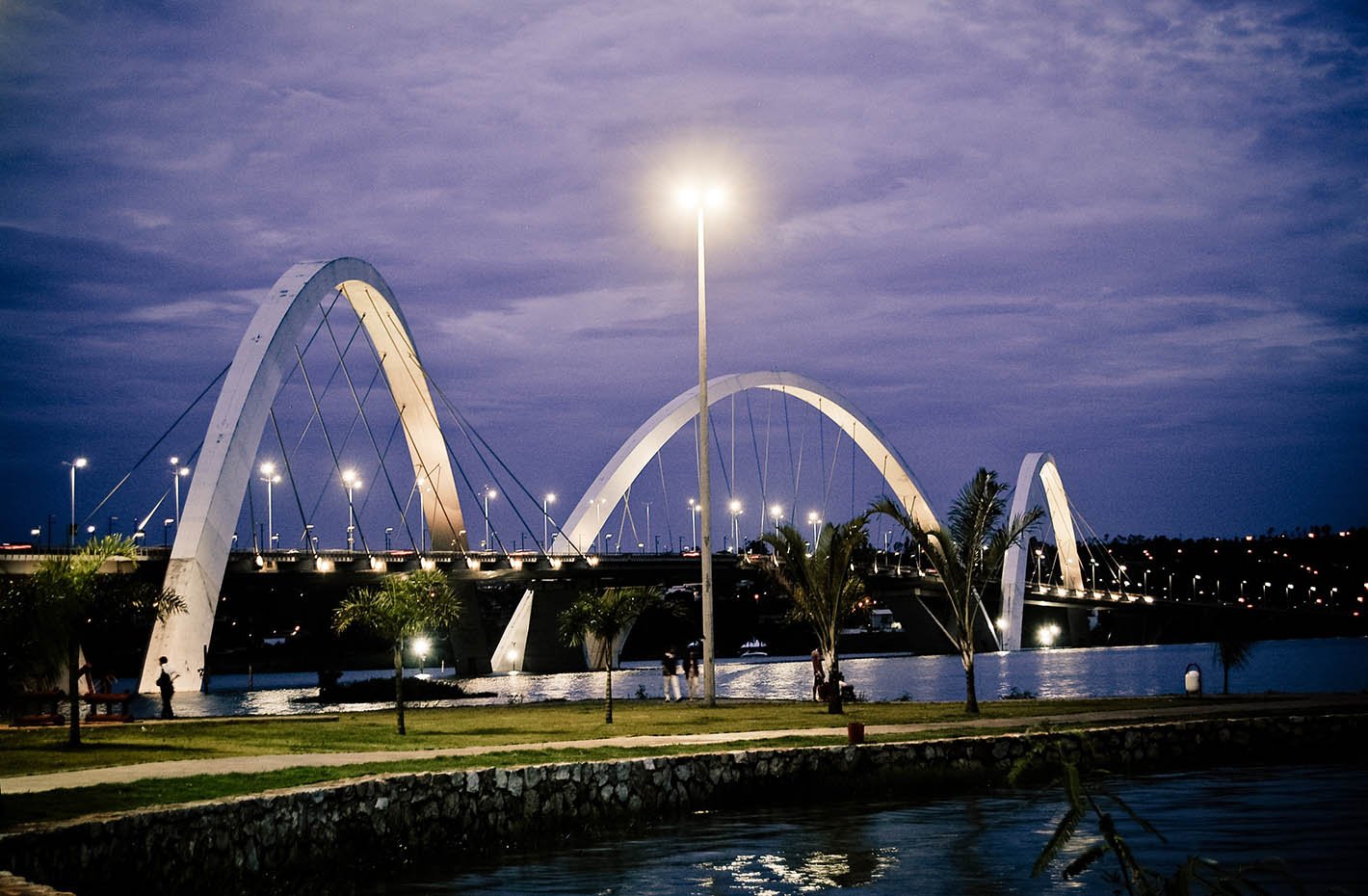Brasilia is a unique and fascinating city that was designed specifically to be the capital of Brazil. In 1987 UNESCO declared it a World Heritage Site. Here are some suggestions for your trip.
The Square of the Three Powers
This square is the political heart of Brasilia and is an impressive place to visit to marvel at Oscar Niemeyer‘s bold architecture. The architecture is clean-lined and minimalist, with large glass and steel facades, emphasizing the concepts of progress and modernity. These concepts were the driving force behind the construction of Brasilia as the new capital of the country.
The area occupies a large public area located in the center of the city and is the site of three of the country’s most important government buildings: the Presidential Palace (also known as the Planalto Palace), the National Congress of Brazil and the Federal Supreme Court.
The square itself is an open space with a dark granite surface and is surrounded by a number of modern buildings and iconic monuments, including the famous sculpture Justice by Alfredo Ceschiatti, which stands in the center of the square.
It is also a place of great historical and political importance in Brazil, and is often the scene of demonstrations and public protests. Definitely a postcard that will not be missed if you visit the city.
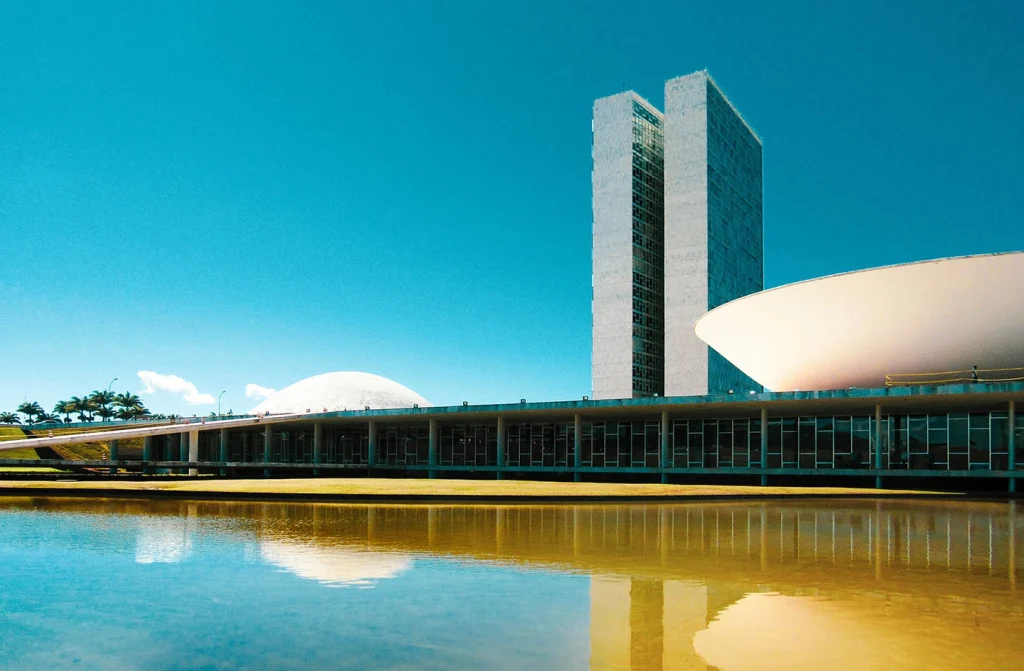
Metropolitan Cathedral of Brasilia
If Brasilia is a unique and fascinating city, so is its cathedral.
Designed by architect Oscar Niemeyer and consecrated in 1970, it has the distinctive shape of a crown of thorns or a lotus flower. The roof is formed by 16 curved concrete pillars that extend upward and meet at the top, forming a circular glass oculus.
The interior of the cathedral is spacious and bright, with a great deal of natural light entering through the oculus. In the center of the temple is a circular altar, surrounded by wooden pews. The floor of the cathedral is made of stone and has an intricate geometric pattern.
Outside, the cathedral is surrounded by a pond and gardens. There are four bronze sculptures depicting the evangelists at the entrance of the cathedral, and a 20-meter-high concrete cross in the plaza in front of the temple.
No matter your religion, it is a must-see building.
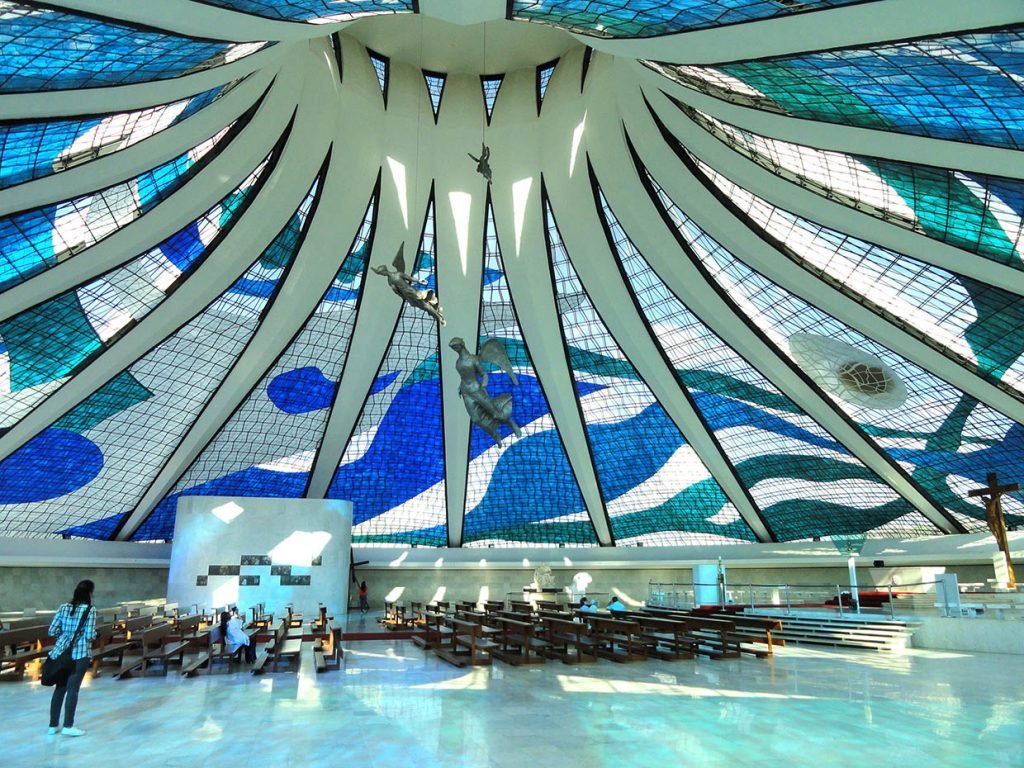
JK Memorial
It is a monument and museum in honor of the founder of Brasilia, Juscelino Kubitschek, located in Brasilia, the capital of Brazil. It was inaugurated in 1981, 15 years after Kubitschek’s death in a car accident in 1966.
The JK Memorial is located on the shore of Lake Paranoá and consists of several structures, including a mausoleum where the remains of Juscelino Kubitschek and his wife, Sarah Kubitschek, rest. The main structure is a 28-meter high tower with a large bronze sculpture of Juscelino Kubitschek on top.
Inside the JK Memorial, there are a number of exhibits that tell the story of Juscelino Kubitschek and his role in the founding of Brasilia. Also on display are Kubitschek’s personal items, such as his presidential car and some of his letters and documents.
The JK Memorial is a popular place for tourists and is also used for cultural events and official ceremonies. The site is open daily, with free admission.
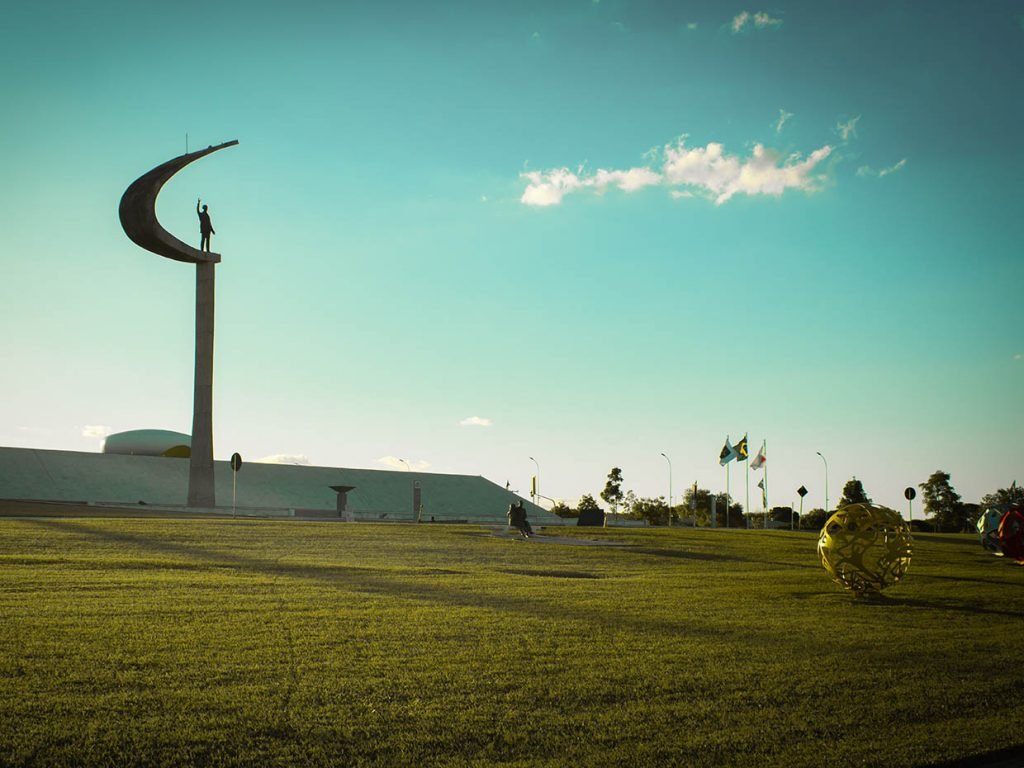
National Museum of the Republic
The National Museum of the Republic (MNR) is an important museum that was also designed by architect Oscar Niemeyer and opened in 2006.
The museum is dedicated to the history and culture of Brazil, with an extensive collection of artifacts and exhibits ranging from prehistory to contemporary times. The collection includes archaeological artifacts, Brazilian folk art, art and decorative objects, photographs and historical documents.
The museum building is impressive in its own right, with a curved glass façade and a large public square in front. The interior features a large central hall that is used for special exhibitions as well as cultural and musical events.
The MNR also houses a library specializing in Brazilian history and culture, with an extensive collection of books, magazines and publications related to Brazilian history, art and culture.
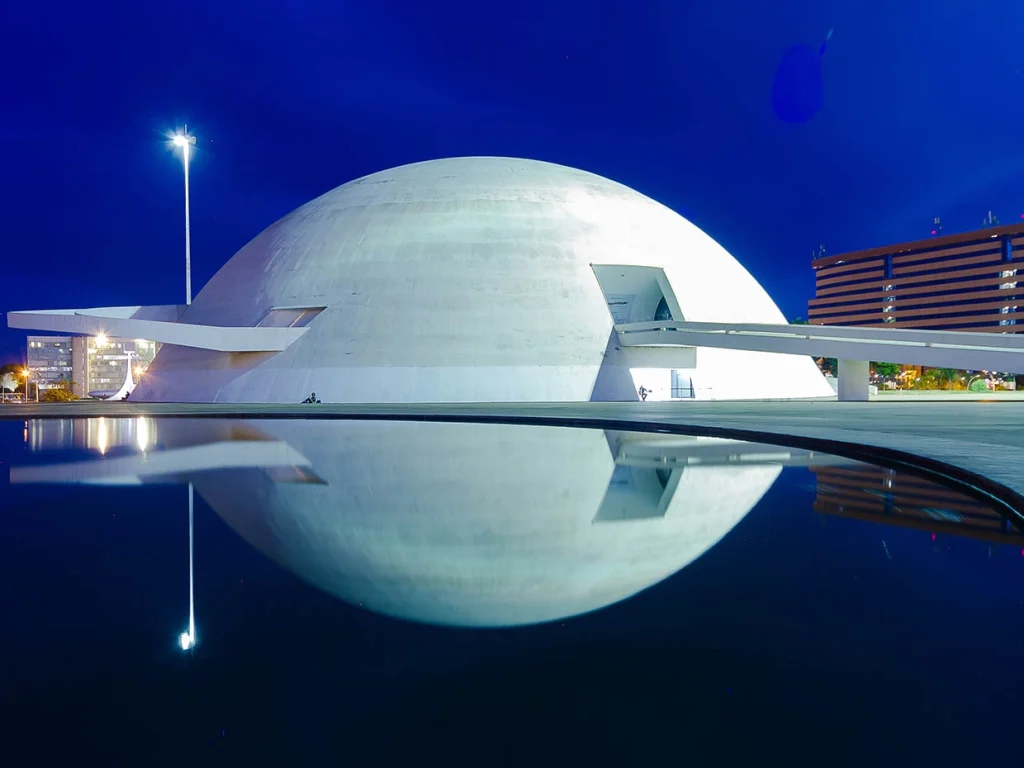
Alvorada Palace
The official residence of the president of Brazil also confirms that Brasilia is a unique and fascinating city. Designed by architect Oscar Niemeyer and built in 1958, it is located in a large green area and is surrounded by an artificial lake, making it a very picturesque place. The palace has a modern and minimalist style, with simple lines and an elegant appearance.
The entrance to the Alvorada Palace is through a wide white marble square, with a waterfall of water running down a series of stairs. Inside, the palace has spacious halls, private rooms and service areas, as well as an impressive collection of works of art. was the one who called it. President Kubitschek, who was the first to inhabit the palace, chose the name Alvorada (below).
« Que é Brasília, senão a alvorada de um novo dia para o Brasil!»
Juscelino Kubitschek
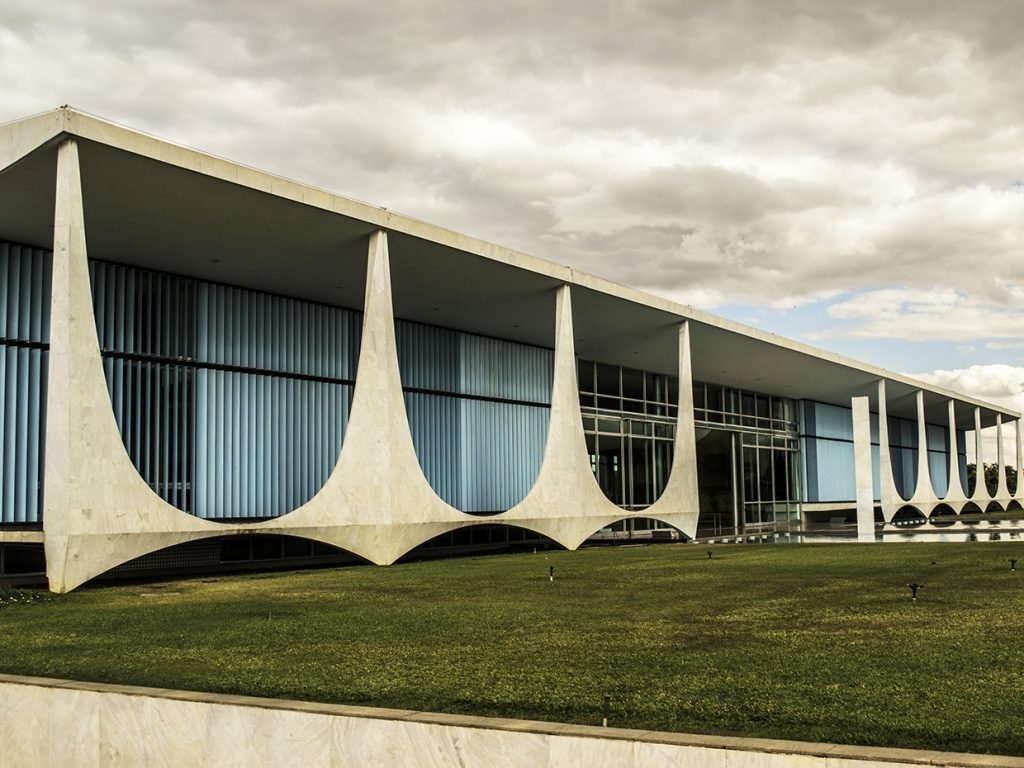
Brasilia National Park
After so much architecture, a bit of nature in this unique and fascinating city comes in handy. This park offers a natural experience in the middle of the city. It has trails to walk and observe the fauna and flora of the Brazilian Cerrado.
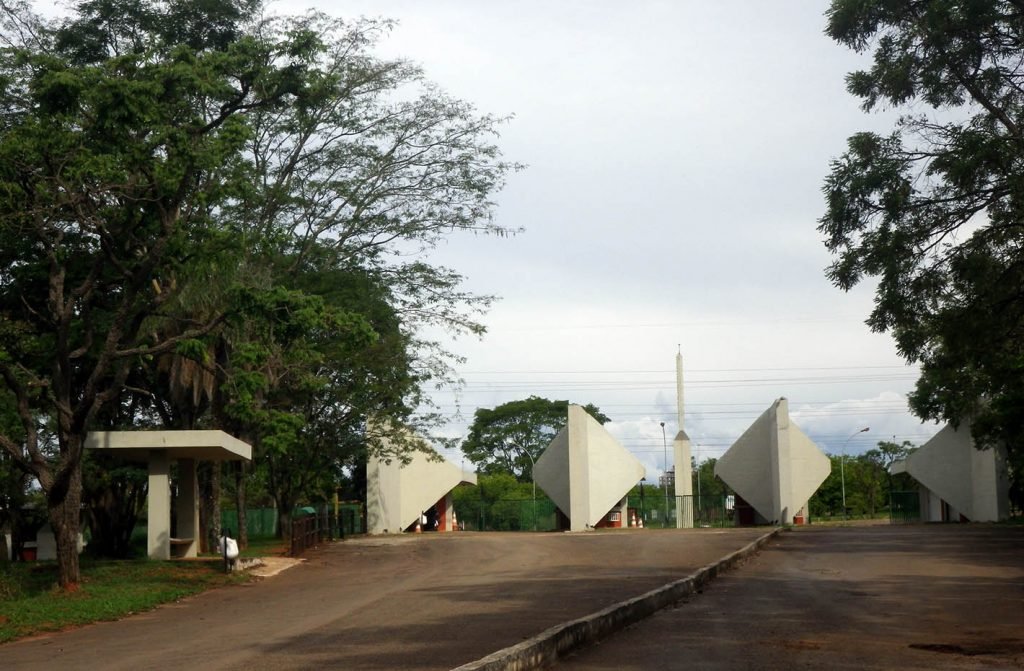
Juscelino Kubitschek Bridge
Also known as the JK Bridge, it is an iconic bridge that crosses Lake Paranoá and is famous for its design that makes it one of the most emblematic structures in the city.
It was designed by Brazilian architect Alexandre Chan and was completed in 2002. It is composed of three asymmetrical steel arches resembling a giant harp that rise majestically over the water and give the bridge a unique and elegant appearance.
It has a total length of approximately 1,200 meters and connects the two shores of Lake Paranoá in Brasilia. It is part of the L4 highway, one of the city’s main thoroughfares, and facilitates traffic and connectivity in the Brazilian capital.
It also has a lighting system that enhances its beauty at night. The arches are illuminated with LED lights that change color, creating dazzling visual effects and making the bridge an even more impressive attraction after dark.
Its sidewalks and bike paths make it a popular place to stroll, run and bike while enjoying panoramic views of the lake and the city.

Mané Garrincha Stadium
It is one of the most important and emblematic soccer stadiums in Brazil.
It is named after Manoel Francisco dos Santos, who was a legendary Brazilian soccer player known as Garrincha, who was considered one of the best soccer players of all time and is an iconic figure in the history of Brazilian soccer.
It is the largest stadium in the city and is located in the sports complex known as Complexo Poliesportivo Ayrton Senna.
Its design is notable for its undulating roof and contemporary architecture. The roof is composed of a series of curved panels that resemble bird feathers in homage to Garrincha. Since its remodeling in 2003 (it had been inaugurated in 1974), it has a capacity to hold more than 72,000 spectators and is home to local soccer teams, the stadium has hosted major national and international sporting events, including matches of the 2014 FIFA World Cup, the Copa America and other important sporting events. It is also used for cultural events and concerts due to its large capacity and central location in Brasilia.
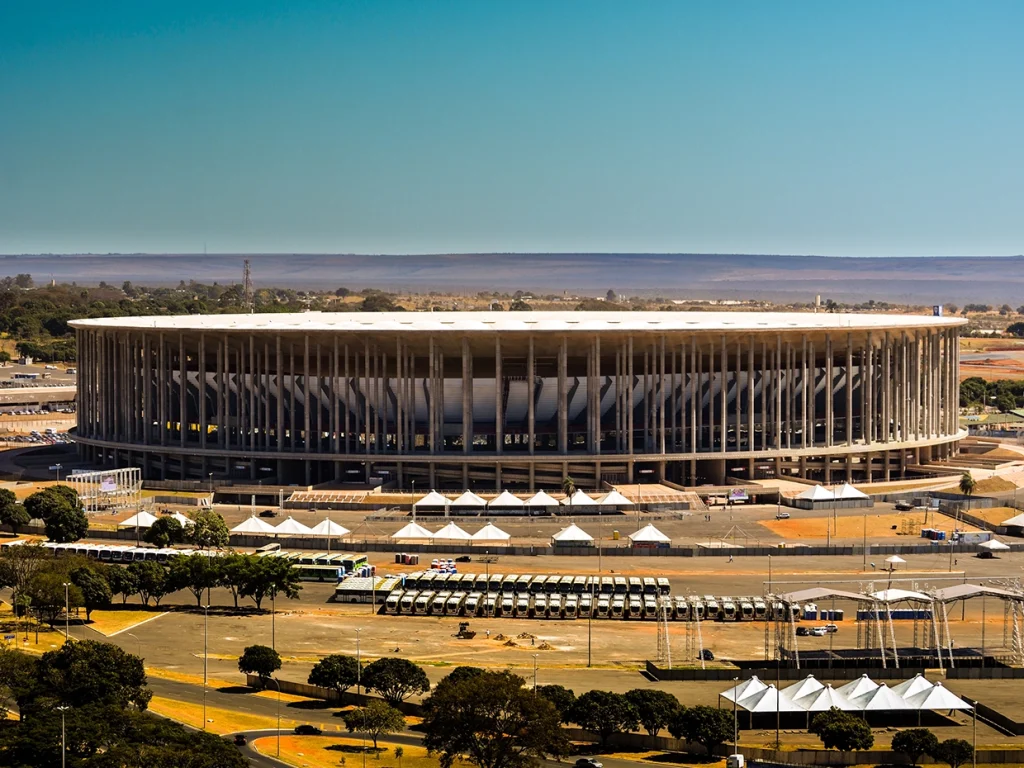
Pontão do Lago Sul
It is a popular tourist spot located on the shores of Lake Paranoá and is known for its beautiful views of the lake and stunning sunsets.
It is a center of entertainment and gastronomy, boasting a wide variety of restaurants, bars and cafes, many of which offer live music and nightly shows. There are also stores and boutiques for those who wish to do some shopping.
Pontão do Lago Sul is also a popular place for outdoor activities such as boating, fishing, hiking and cycling. In addition, there is an artificial beach for swimming and sunbathing.

FAQs

How to get to Brasilia?
BY PLANE: Brasilia’s International Airport is located 11 km south of the city.
BY BUS. Travel times are approximately 15 hours from São Paulo, 18 hours from Rio, 10 hours from Belo Horizonte.

In addition to enjoying its beaches, the city also offers a wide variety of activities, such as boat rides, water sports and gastronomic tours.


